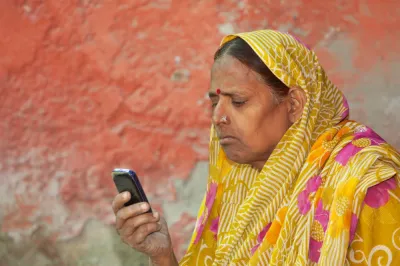Protecting Children in the Age of Digital Finance

At a time when the digital economy is proliferating at a rapid pace, children and youth are exposed to more and more opportunities to interact with money by making digital payments through apps and websites. To ensure that they make proper use of these payment options, minors need to be educated and safeguarded. This places an onus on financial service providers to offer safe, secure and responsible products that support the financial needs of young people while also helping to mitigate the associated risks.
From 27 March to 2 April 2017, Global Money Week celebrations in over 140 countries aimed to raise awareness of the importance of financial inclusion and education for children and youth around the world. As part of the week’s celebrations, Child and Youth Finance International (CYFI) and the MasterCard Corporation launched their publication Safer Payments Products for Minors: Guiding Minors Towards Financial Autonomy, presenting the guide at a special event to Her Majesty Queen Máxima of the Netherlands. Created in collaboration with ParentPay, Nimbl, Mirador Digital, and various other organizations in the financial sector, this document contains ten guidelines, along with real life examples, to help financial institutions design and implement financial payment products that are suitable for minors.

Within these ten guidelines, a couple of themes stand out, such as the importance of financial education for children to promote responsible use of financial services, and the role of parents or guardians in supervising their usage. Parental involvement is crucial in this effort, especially when it concerns younger children. Parents should engage in a constructive dialogue with their children to fully empower them economically while ensuring that they stay aware of potential risks. Financial service providers should design products in such a way to progressively increase children’s autonomy as they grow up.
A few banks such as Swedbank of Sweden and Post Office Savings Bank (POSB) of Singapore provide good examples of what this looks like in practice. Swedbank offers the possibility for parents to choose the functionalities available on their child’s account. Minors have the opportunity to check their account balance in an easy and fun way that encourages them to regularly monitor their expenses and savings. POSB has developed a mobile app that lets children monitor their daily allowance and lets parents set a daily spending limit and check their children’s savings.
The guide is a way to help financial service providers ensure greater and more responsible access to payment products for minors, especially by adapting operational and supervisory requirements accordingly. This is likely to increase financial inclusion and education of children and youth, who will eventually become able to independently manage their own money and payment products in a safer and more effective manner.
A full list of the payment guidelines can be found below:
- Restricting the use of products and services inappropriate for minors. This can include merchant categories such as gambling, weapons, pornography, alcohol and tobacco.
- Promoting responsible spending. This can occur through real-time budget or spend tracking tools.
- Educating minors on how to use their payment products safely. Information on product use, technological features, privacy settings and avoidance of identity theft is highly recommended.
- Offering savings in addition to payment services. The product could include a link to a savings account where minors are able to set and follow savings goals.
- Enabling parents to choose certain payment types. This would provide parents with a facility to “opt-in” or “opt-out” of certain payment types, choosing when and where the products can be used.
- Allowing parents to establish card restrictions. The guide calls for this parental control to be mitigated over time depending on the minor’s age, financial capability, local regulations and issuer discretion.
- Providing parental access to spending behavior. This could take the form of regular notifications of product usage for parents and minors via email, webpage or mobile app.
- Protecting minors and their privacy. This includes privacy laws that financial service providers must adhere to, along with ensuring that minors and parents are regularly informed of their privacy and data protection rights.
- Delivering appropriate marketing initiatives for both parents and minors. These marketing practices should encourage parents and minors to review products together, promote financial literacy and improve money management skills.
- Providing financial education tools to help minors manage their money. Payment products should be complemented by quality financial educational tools that are designed and assessed by third parties to ensure both quality and independence are being safeguarded.


